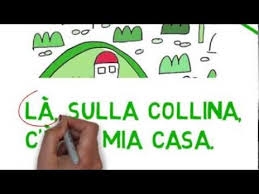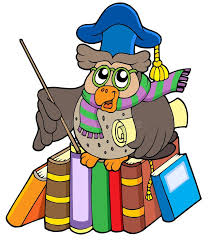|
|
|
|
|
| |
Felice 2024
E spero che abbiate comprato le mutandine rosse che regalerete il 31
dicembre!
Secondo questa tradizione la notte di capodanno—tra il 31 dicembre e il 1°
gennaio—si dovrebbero indossare delle mutandine rosse (boxer o slip per gli
uomini) per favorire la buona sorte (come le lenticchie portano ricchezza e il
melograno l’abbondanza). Inoltre il rosso è un ottimo amuleto per la fertilità
femminile e maschile. La cosa da ricordare è che le mutande devono essere
un regalo, indossate al rovescio il 31 dicembre, e al verso giusto il 1° gennaio;
e buttate via il giorno dopo con altre cose vecchie.
Le origini di questa usanza portafortuna provengono dalla Cina, dove il rosso è
il colore simbolo della vita, forza e ricchezza. Durante il periodo dell’Imperatore
Augusto, il rosso era associato al potere, alla salute e alla fertilità. Anche
durante il Medioevo il rosso aveva uso di protezione contro la malasorte e le
streghe.
Vi auguro ogni felicità nell’anno prossimo, che tutti i vostri sogni si avverino!
Happy 2024
And I hope you purchased the red underwear you will gift on December
31st!
According to this tradition, on New Year’s Eve—the night between December
31st and January 1st—women and men should wear red underpants, to bring
good luck (as lentils bring wealth and pomegranates bring abundance). In
addition, red is an excellent amulet for female and male fertility. The thing to
remember is that the undergarments must be a gift, they are worn inside out on
December 31st and right-side out on January 1st, and thrown away the next day
along with other old things.
The origins of this good luck tradition come from China where the color red is
the symbol of life, good fortune and wealth. During the period of Emperor
Augustus, red was associated with power, health and fertility. Even during the
Middle Ages red was used as a protection from bad luck and witches.
I wish you every happiness in the new year, may all your wishes come true!
Saturday, December 30, 2023
|
|
UNA TRADIZIONE NATALIZIA
Uno dei ricordi natalizi più teneri della mia infanzia a Roma è l’arrivo degli
zampognari dalle montagne dell’Abruzzo.
Lo zampognaro è il suonatore di zampogna, uno strumento musicale arcaico a
fiato diffuso in Italia centro-meridionale. La zampogna (da non confondere con
la cornamusa diffusa nel nord Italia e in altre regioni europee) è uno strumento
tradizionale caratterizzato dalla presenza di più canne sonore (chanter).
Le regioni dove è tradizionalmente presente la zampogna sono: Lazio (province
di Frosinone e Latina), Abruzzo, Molise, Campania, Puglia, Basilicata, Calabria,
e Sicilia.
Comunemente con il termine di zampognari si definiscono quei musicisti o
figuranti che con l'arrivo del Natale (in particolare durante il periodo della
Novena dell'Immacolata Concezione e del Natale), percorrono le vie cittadine, in
abiti tipici, suonando motivi natalizi tradizionali, quali ad esempio Tu scendi
dalle stelle di Sant'Alfonso Maria de' Liguori. Generalmente gli zampognari
suonano in coppia, uno la zampogna vera e propria ed un altro la ciaramella o
altri strumenti a fiato e tradizionalmente si tratta di pastori o contadini che si
trasferiscono temporaneamente in città per il periodo natalizio.
La "coppia" di zampognari rappresenta anche una presenza fissa del presepe e
in particolare del presepe napoletano, dove generalmente trova posto nelle
immediate vicinanze della "capanna" o "grotta" della Sacra Famiglia.
Se è vero che la zampogna nei grandi centri urbani si usa solo nel periodo
natalizio, in ambito rurale/pastorale questa accompagna tutti gli accadimenti
dell'anno. Oggi l'impiego della zampogna e degli zampognari in ambito rurale
(processioni, rituali, feste e balli) è praticato in Campania (provincia di Salerno),
Basilicata, Calabria, Sicilia e Abruzzo.
[https://it.wikipedia.org/wiki/Zampognaro]
Con questo, vi auguro un felicissimo Natale.
A Christmas tradition
One of the fondest Christmas memories from my childhood in Rome is the
arrival of the bagpipers from the mountains of Abruzzo.
The zampognaro is the player of the zampogna, an archaic musical wind
instrument widespread in central and southern Italy. The zampogna (a type of
bagpipe not to be confused with the bagpipe widespread in northern Italy and
other parts of Europe) is a traditional instrument characterized by the presence
of multiple sound pipes (chanter).
The regions where this bagpipe is traditionally present are: Lazio (provinces of
Frosinone and Latina), Abruzzo, Molise, Campania, Puglia, Basilicata, Calabria,
and Sicily.
The term zampognari (bagpipe players) commonly refers to those musicians or
figures who, with the arrival of Christmas (in particular during the period of the
Novena of the Immaculate Conception and Christmas), walk through city streets,
in typical clothing, playing traditional Christmas tunes, such as You descend
from the stars by Saint Alfonso Maria de' Liguori (1696-1787). Generally, the
pipers play in pairs, one the actual zampogna and another the shawm or other
wind instruments. Traditionally they are shepherds or farmers who temporarily
move to the city for the Christmas season.
The "pair" of pipers also represents a fixed presence in the crèche, more
specifically in the Neapolitan nativity scene, where the figurines are generally
placed in the immediate vicinity of the "manger" or "grotto" of the Holy Family.
If it is true that the bagpipe in large urban centers is only used during the
Christmas period, in rural/pastoral settings it accompanies all the events of the
year. Today the use of bagpipes and pipers in rural areas (processions, rituals,
parties and dances) is practiced in Campania (province of Salerno), Basilicata,
Calabria, Sicily and Abruzzo. https://it.wikipedia.org/wiki/Zampognaro
With this I wish you a Very Merry Christmas.
Saturday, December 16, 2023
|
|
| |
CONNETTIVI—PARTE I  CONJUNCTIONS—PART II CONJUNCTIONS—PART II
Aggiungiamo alla lista dei connettivi più comuni della volta scorsa:
Let’s add to the list of the most common conjunctions from last time:
Mentre: while, during, whereas
Mentre Gianni guardava la televisione, sua sorella studiava.
While Gianni watched television, his sister studied.
Comunque: anyway, in any case, even so, anyhow, however, no
 matter how matter how
Comunque vadano le cose, puoi sempre contare su di me.
However things go, you can always count on me.
Perciò: therefore, for this reason
Non è venuto, perciò non ho potuto consegnargli la tua lettera.
He didn’t come; therefore I couldn’t give him your letter.
Inoltre: furthermore, also, moreover
T’invio inoltre una copia dell’articolo, così la puoi leggere a tuo
 agio. agio.
Furthermore, I will send you a copy of the article, so you can
 read it at your leisure. read it at your leisure.
Ad esempio: for example
Sono occupatissima questi giorni, ad esempio oggi ho insegnato
 tre classi e ho fatto una traduzione dall’inglese all’italiano. tre classi e ho fatto una traduzione dall’inglese all’italiano.
I’m extremely busy these days, for example today I taught three
 classes and did a translation from English into Italian. classes and did a translation from English into Italian.
Riguardo a: regarding
Riguardo a questo problema, i candidati alle elezioni non hanno
 le idee chiare. le idee chiare.
Regarding this problem, the candidates to the elections don’t
 have their ideas straight. have their ideas straight.
Nonostante: in spite of, despite, although, nevertheless
Nonostante glielo avessi chiesto una decina di volte, non ha
 eseguito il lavoro. eseguito il lavoro.
In spite of having asked him about ten times, he didn’t do
 the work. the work.
Dunque: therefore, so, well
Penso, dunque sono.
I think therefore I am.
Cogito ergo sum.
Je pense, donc je suis.
Saturday, November 2, 2023
|
|
CONNETTIVI—PARTE PRIMA CONJUNCTIONS—PART ONE

Secondo il dizionario Garzanti Linguistica, il gruppo “i connettivi” nella
linguistica testuale si riferisci a qualsiasi parola (per lo più
congiunzione), espressione, o frase che collega due segmenti o blocchi
di testo. Spesso questi confondono gli studenti d’italiano. Perciò nelle
prossime settimane, daremo un’occhiata ad alcuni tra i più comuni
connettivi.
According to the Garzanti Linguistica dictionary, the linguistic group
known as “connectives” refers to any word (generally a conjunction),
expression, or phrase what joins two segments or blocks of text.
These often are confusing to students of Italian. Therefore, during the
next several blog entries, we will look at a few of the most common
conjunctions:
Insomma: so, therefore, in conclusion, but really, so-so
Domanda: Com’era la festa? Question: How was the party?
Risposta: Insomma… Answer: So-so…
Siccome: given that, because, since
Siccome non c'era nessuno a casa, abbiamo lasciato un biglietto.
Since no one was home, we left a note.
Affinché: so that, in order that
Affinché il suo sogno diventi realtà, dovrà vincere la lotteria.
In order that his dream become reality, he will have to win the
 lottery. lottery.
Però: but, yet, however, though, well wow
È una macchina vecchia, però funziona ancora bene.
It’s an old car, but it still works well.
Ossia: that is, in other words
Dante Alighieri, ossia l’autore di La divina commedia, nacque a
 Firenze. Firenze.
Dante Alighieri, that is the author of The Divine Comedy, was
 born in Florence. born in Florence.
Ovunque: wherever, everywhere
Ti seguirò ovunque tu vada.
I will follow you wherever you go.
Tuttavia: however, nevertheless
Non te lo meriti, tuttavia soltanto per questa volta ti aiuterò.
You don’t deserve it, however just this time I’ll help you.
Anche se: even if
In quella città si possono fare molte belle passeggiate, anche
 se le strade non sono asfaltate. se le strade non sono asfaltate.
In that city you can take some lovely walks, even if the streets
 aren’t paved. aren’t paved.
Saturday, Novenber 18, 2023
|
|
MAIUSCOLE e minuscole—Parte 3

Passiamo dalla spiegazione dell’Accademia della Crusca a esempi più semplici
—questa volta esaminiamo l’uso della minuscola:
la minuscola iniziale si usa:
1. Con aggettivi di secoli ed epoche: la storia medioevale, lo stile barocco
nacque quattro secoli fa
2. Con nomi comuni geografici: la montagna, il mare, la collina
3. Con aggettivi di nazionalità: gli italiani, le canadesi
4. Con nomi di popoli (non antichi) e lingue: Luciana, la studentessa irlandese,
parla molte lingue in oltre
al gaelico, il portoghese, il giapponese, e l’inglese
5. Con i giorni della settimana: la domenica pranziamo fuori; mercoledì ho
appuntamento dal dentista
6. Con i mesi dell’anno: luglio è il mio mese preferito; quest’anno vado a sciare
a dicembre non a gennaio
7. Con le stagioni: primavera, estate, autunno, inverno
8. Con valute: in Italia non si usa più la lira, solo l’euro
UPPERCASE and lowercase letters—Part 3
Let's move from the explanation of the Accademia della Crusca to simpler
examples—this time we examine the use of lowercase letters:
In Italian, initial lowercase letters are used:
1. With adjectives for centuries or epochs: Medieval history; the Baroque style
was born four
centuries ago (lowercase in Italian)
2. With common geographic names: the mountain, the sea, the hillside
3. With adjectives of nationality: the Italians, the Canadians
4. With names of peoples (not ancient) and languages: Luciana, the Irish
student, speaks many
languages besides Gaelic, Portuguese, Japanese, and English
5. With the days of the week: on Sundays we dine out, Wednesday I have a
dental appointment
6. With the months of the year: July is my favorite month; this year I am going
skiing in December not
January
7. With the seasons: Spring, Summer, Autumn, Winter
8. With currency: In Italy we no longer use the Lira only the Euro
Saturday, October 8, 2023
|
|
MAIUSCOLE e minuscole—Parte 2

Passiamo dalla spiegazione dell’Accademia della Crusca a esempi più semplici—
questa volta esaminiamo l’uso della MAIUSCOLA, la prossima volta, l’uso della
minuscola:
la MAIUSCOLA iniziale si usa:
1. Con nomi propri o soprannomi: Stefano Rossi, Gemma Bianchi, “il Capo”
2. Con nomi di secoli, epoche, movimenti artistici e culturali: il Quattrocento,
il Risorgimento, il Modernismo
3. Con nomi di popoli antichi: gli Etruschi, i Fenici
4. Con nomi propri geografici o di territorio: l’Arno, l’Europa, Trastevere, i
Navigli
5. Con nomi specifici di: edifici, istituzioni, organismi (per distinguerli dai
nomi generali): la Borsa di Milano/borsa come oggetto; la Chiesa/chiesa
come edificio
6. Con festività: Natale, Capodanno, Pasqua
7. All’inizio del discorso diretto: Finalmente Massimiliano mi ha detto: “Ti
amo!”
8. Con titoli di libri, film, giornali: I vitelloni (film di Federico Fellini); Le tre
del mattino (libro di Gianrico
Carofiglio); Il Messaggero (giornale di Roma)
9. Con sigle (a volte solo con la lettera iniziale, a volte l’intera sigla): Onu/
ONU (organizzazione delle nazioni unite); Ogm/OGM (organismo
geneticamente modificato)
UPPERCASE and lowercase letters—Part 2
Let's move from the explanation of the Accademia della Crusca to simpler
examples—this time we examine the use of UPPERCASE letters, next time,
the use of lowercase letters:
In Italian, initial CAPITAL LETTERS are used:
1. With proper names or nicknames: Stefano Rossi, Gemma Bianchi, “the
Boss”
2. With names of centuries, eras, artistic and cultural movements: the
Fifteenth Century, the Risorgimento, Modernism
3. With names of ancient peoples: the Etruscans, the Phoenicians
4. With proper geographical or territorial names: the Arno (in Florence),
Europe, Trastevere (in Rome), the Navigli (in Milan)
5. With specific names of: buildings, institutions, organisms (to distinguish
them from general names): the Milan Stock Exchange/purse as object; the
Church/church as a building
6. With holidays: Christmas, New Year, Easter
7. At the beginning of the direct speech: Finally, Massimiliano told me: “I
love you!”
8. With titles of books, films, newspapers: I vitelloni (film by Federico Fellini);
Three in the Morning (book by Gianrico Carofiglio); Il Messaggero (Rome
newspaper)
9. With acronyms (sometimes just the initial letter, sometimes the entire
acronym):
Onu/UN (United Nations); Gmo/GMO (genetically modified organism)
Saturday, Sept 23, 2023
|
|
MAIUSCOLE e minuscole—Parte 1
.jpg)
Riguardo all’uso delle MAIUSCOLE e minuscole ci rivolgiamo all’Accademia
della Crusca:
"Tranne che per quelli che sono indiscutibili nomi propri (Anna, Buridano, Lettonia)
l'uso della maiuscola in italiano offre molte zone d'ombra perché ragioni
grammaticali (in particolare il confine non sempre netto tra «nome proprio» e
«nome comune») s'intrecciano con ragioni ideologiche più o meno consapevoli. Un
«nome comune» come avvocato può essere scritto con la maiuscola in riferimento
a un individuo ben determinato («Ah! Ti presento, aspetta, l'Avvocato, un amico /
caro di mio marito...» Gozzano; e si pensi all'Avvocato per antonomasia di cui
scrivono i giornali, ossia a Gianni Agnelli). Il nome papa, abitualmente con la
minuscola, può ricevere la maiuscola in riferimento al pontefice regnante: il Papa,
senza altre specificazioni, è Francesco I. Ma possono aversi motivazioni diverse:
al Papa di un cattolico ovvero di un laico ammiratore dell'istituzione o di quel
singolo pontefice può contrapporsi il papa di un agnostico o di un anticlericale.
Nel caso di Stato e di altri omonimi la maiuscola ha valore distintivo: «i
dipendenti dello Stato» ma «sono stato dipendente pubblico» (e allo stesso modo:
«la Camera dei deputati» / «la camera da letto», «la Borsa di Milano» / «la borsa
di Teresa», «la Chiesa cattolica» / «la chiesa di corso Umberto» ecc.). Per i nomi
di popoli (o etnici) bisogna distinguere: la minuscola è oggi obbligatoria se si
tratta di aggettivi («le strade francesi»), decisamente preferita in riferimento a un
singolo individuo («il greco aveva conservato fino allora un silenzio pregnante» P.
Levi), mentre si alterna con la maiuscola nel plurale («e sì che i tedeschi non li
batte nessuno in nulla» Fenoglio / «i Tedeschi lo avevano preso in seguito alla
spiata di un qualche delatore» Morante).
Qualche volta la maiuscola può servire a distinguere un popolo antico dal moderno:
«i Romani conquistarono le Gallie» / «i romani sono quasi tre milioni» (e così per i
Greci antichi e i greci moderni, per Liguri / liguri, Siculi / siculi ecc.). Di qui
l'impressione che la maiuscola per gli etnici sia caratteristica di «alcuni libri di
storia»: è un'impressione giusta, perché è per l'appunto nei libri di storia che si
parla di popoli antichi e non dei loro corrispondenti moderni.
" Luca Serianni: (11 ottobre 2002)
https://accademiadellacrusca.it/it/consulenza/uso-delle-maiuscole-e-minuscole/58
UPPERCASE and lowercase letters—Part 1
Regarding the use of UPPERCASE and lowercase letters, we turn to
L'Accademia della Crusca:
"Except for those that are indisputable proper names (Anna, Buridano, Latvia) the use
of capital letters in Italian offers many gray areas because grammatical reasons (in
particular the not-always clear boundary between «proper names» and «common
names") intertwine with more or less informed ideological reasons. A "common
name" like lawyer may be written with a capital letter in reference to a
well-defined individual ("Ah! I present to you, wait, the Lawyer, a dear friend of
my husband’s..." Guido Gozzano**; and think of the quintessential Lawyer the
newspapers write about, i.e. Gianni Agnelli). The name pope, usually with a small
letter, can be capitalized in reference to the reigning pontiff: the Pope, without
further specification, is Francis I, but there may be different motivations: the Pope
to a Catholic or a layman who admires that institution or a specific pontiff can be
compared to the pope of an agnostic or an anti-clerical.
In the case of the State and other homonyms, the capital letter has a distinctive
value: «the employees of the State» but «I was a state employee» (and in the
same way: «the Chamber of Deputies» / «the bed chamber», «the Stock
Exchange/Bourse of Milan» «Teresa's purse», «the Catholic Church» / «the church
on Umberto Boulevard» etc.). For the names of peoples (or ethnic groups) a
distinction must be made: today the lower case is obligatory if we are dealing with
adjectives ("the french roads"), decidedly preferred in reference to a single individual
("the greek had preserved a pregnant silence until then" Primo Levi**), while we
alternate with the capital letter in the plural («and yes, nobody beats the germans»
Beppe Fenoglio** / «the Germans had taken him after being spied on by some
informer» Elsa Morante**).
Sometimes capital letters can be used to distinguish an ancient people from a
modern one: «the Romans conquered Gaul» / «there are almost three million
romans» (and so it goes for the ancient Greeks and the modern greeks, for
Ligurians / ligurians, Sicilians / sicilians, etc. .). Hence the impression that the
capital letter for ethnic groups is characteristic of "some history books": is a
correct impression, because it is precisely in history books that we speak of
ancient peoples and not of their modern counterparts."
Luca Serianni: https://accademiadellacrusca.it/it/consulenza/uso-delle-maiuscole
-e-minuscole/58 ** These are famous Italian authors of the 20th century.
L’Accademia della Crusca has taken quotes from some of their works to as
examples.
Saturday, Sept 9, 2023
|
|
PRENOTARE o RISERVARE
sono due parole che confondono spesso per coloro che traducono dall’inglese.

Per una chiarificazione ci rivolgiamo a il Sabatini Coletti Dizionario della Lingua
Italiana
PRENOTARE***
verbo transitivo//Fissare in precedenza qualcosa, farlo riservare per sé:
prenotare due posti al ristorante;
PRENOTARSI
verbo riflessivo //Mettersi in nota per garantirsi qualcosa; anche scherzando:
mi prenoto per un giro sulla tua nuova barca.
Entrato a far parte della lingua italiana nel secolo XIV
RISERVARE
verbo transitivo
1. Mettere da parte, tenere in serbo qualcosa per qualcuno o per una certa
occasione: riserviamo i risparmi per i momenti difficili.
2. Tenere qualcosa solo per sé o destinarlo solo a determinate persone:
riservo un trattamento di favore agli amici; ha riservato per sé gli incarichi
più importanti.
RISERVARSI
verbo riflessivo//Tenere qualcosa solo per sé: riservarsi un diritto; più
frequente tenersi la facoltà di fare in seguito una cosa che al momento si
rimanda, con l'argomento espresso da frase (introdotta da di): mi riservo di
rispondere più tardi
Entrato a far parte della lingua italiana nel secolo XIII
***Da NON confondere con: PERNOTTARE
verbo intransitivo (ausiliare avere; pernòtto ecc.)
Trascorrere la notte in un luogo diverso da quello abituale: pernottare in
albergo, o da un amico.
Entrato a far parte della lingua italiana nel secolo sec. XIV
PRENOTARE or RISERVARE=RESERVE,
are two words that are often confusing for those translating from English.
For clarification we turn to il Sabatini Coletti Dictionary of the Italian Language
PRENOTARE*** (reserve/book)
transitive verb// To book something in advance, to reserve it for oneself: to
book two places in a restaurant (to book a table for two at a restaurant);
PRENOTARSI (book yourself)
reflexive verb // Draw attention to oneself in order to guarantee something;
even joking.: I’ll book myself for a ride on your new boat.
It became part of the Italian language in the 14th century
RISERVARE (reserve) transitive verb
1. Set aside, keep something in store for someone or for a certain occasion:
We are reserving our funds (saving) for difficult times.
2. Keep something for yourself or only for certain people: I reserve special
treatment for my friends; He reserved the most important tasks for himself.
RISERVARSI reflexive verb//Keep something to yourself: reserve a right;
more frequently: to have the right to do something later that is currently being
postponed, with the argument expressed by a sentence (introduced by “di”): I
reserve the right to reply later.
It became part of the Italian language in the 13th century
***Not to be confused with: PERNOTTARE (stay overnight) intransitive intransitive
verb (auxiliary to have; to stay)
Spending the night in a different place than usual: staying overnight in a hotel,
or with a friend.
It became part of the Italian language in the 14th century.
Saturday, August 26, 2023
|
|
QUANDO SI USA IL PRONOME PERSONALE SOGGETTO IN ITALIANO?

Il pronome personale soggetto—io, tu, lui, lei, Lei, noi, voi, loro—è spesso
sottinteso perché si capisce dalla desinenza del verbo, e perciò non è usato.
Per esempio, si dice: “Come ti chiami?”
“Mi chiamo Caterina.”
[non si dice “Io mi chiamo Caterina.”
Ma, si trova espresso esplicitamente:
1.Quando c’è enfasi sul soggetto:
2.Per differenziare un soggetto da un altro:
3.Con frasi o liste di soggetti differenti:
4.In frasi singole con il soggetto alla fine:
5.Con anche, neanche, nemmeno, pure, proprio
6.In combinazione con un numero:
7.Spesso in frasi formali:
8.Con il congiuntivo quando la stessa forma
verbale vale per più persone: |
“Oggi lavo io i piatti.”
“Ciao, mi chiamo Girolamo e tu?
“Io mi chiamo Giuseppina.”
[io o non altre persone]
“Ogni martedì, io esco, lui studia, loro lavorano.”
“Non preoccupatevi, ci pensa lei.”
“Veniamo anche noi.”
“Neanche noi sappiamo dove siano finite le chiavi.”
“Voi quattro siete i veri moschettieri?”
“Lei, Dottor Giacomini, è molto simpatico.”
“Bisogna che io sappia la verità.”
“Bisogna che io sappia la verità.”
“Bisogna che tu sappia la verità.”
“Bisogna che lui sappia la verità.”
“Bisogna che lei sappia la verità.”
“Bisogna che Lei sappia la verità.” |
The subject personal pronoun—I, you, he, she,
she (formal), we, you,they—is often implied
because it is understood by the ending of the
verb, and therefore is not used, because it isn’t
necessary
For example, you say: "What's your name?"
"My name is Caterina."
[you don't say "I call myself Caterina."]
But, the subject pronoun is explicitly stated:
1. When there is emphasis on the subject:
2. To differentiate one subject from another:
3. With sentences or lists of different subjects:
4. In single sentences with the subject at the end:
5. With also, not even, not even, too, really:
6. In combination with a number:
7. Often in formal sentences:
8. With the subjunctive when the same verbal
form applies to many people:
|
"My name is Caterina."
[you don't say "I call myself Caterina."]
“Today I do the dishes.
"Hello, my name is Girolamo and you?"
"I call myself Josephine."
[me, and not other people]
“Every Tuesday, I go out, he studies, they work.”
"Don't worry, she'll take care of it."
"We're coming too."
“Even we don't know where they are (the keys)."
"Are you four the real musketeers?"
"You, Doctor Giacomini, are very nice."
"I need to know the truth"
“You (formal) need to know the truth.”
“He needs to know the truth.”
“She needs to know the truth.”
"You (formal) need to know the truth" |
Saturday, August 12, 2023
|
|
IL MONOSILLABO “SE” È ACCENTATO O NO? 
Parte 3
Come abbiamo già visto, di solito i monosillabi non sono accentati, perché
essendo formati da una sola sillaba non possono causare un’incertezza sulla
posizione dell’accento. Soltanto alcuni monosillabi sono accentati per
differenziare il significato o la categoria grammaticale di parole scritte nello
stello modo, in altri termini, per evitare la possibile confusione con omonimi
molto comuni.
Ma, cosa facciamo con il monosillabo SE?
Se senza accento (derivato dal latino si), è una congiunzione con
 valore ipotetico: valore ipotetico:
Se Alberto fosse partito in tempo, non avrebbe perso il volo.
Se pioverà domani dovranno rinviare il campionato.
Sé, con l‘accento acuto (derivato dal latino se), è il pronome
 personale di terza persona: personale di terza persona:
Paolo pensa solo a sé, è insopportabile!
Di per sé sarebbe una buona idea, ma dobbiamo pensare
 alle conseguenze. alle conseguenze.
DUBBI: Una diffusa consuetudine vuole che il pronome personale sé perda
l’accento davanti all’aggettivo dimostrativo stesso, perché verrebbe meno la
possibilità di confonderlo conla congiunzione se.
Tuttavia, non c’è ragione per cui una medesima forma debba essere
scritta in un caso con l’accento e in un altro senza; inoltre, il problema della
confusione potrebbe sorgere al plurale (se stessi e se stesse sono sequenze
nelle quali se può essere congiunzione, in frasi come: se stessi male, ti
chiamerei; se stesse a casa, risponderebbe).
È dunque consigliabile, perché più logica ed economica, la forma sé
stesso.
IS THE MONOSYLLABLE “SE” ACCENTED OR NOT?
Part 3
As we have already seen, usually monosyllables are not stressed, because
being formed by a single syllable they cannot cause uncertainty about the
position of the stress. Only some monosyllables are accented to differentiate
the meaning or grammatical category of words written in the same way, that
is to say, to avoid possible confusion with very common homonyms.
What do we do with the monosyllable SE?
Se without an accent (derived from the Latin si), is a conjunction with a
hypothetical value:
Se=If Alberto had left in time, he would not have missed
 his flight. his flight.
Se=If it rains tomorrow they will have to postpone the
 championship. championship.
Sé, with the acute accent (derived from the Latin se), is the third person
personal pronoun:
Paolo thinks only of himself, he is unbearable!
That in itself would be a good idea, but we have to think
 about the consequences. about the consequences.
DOUBTS: A widespread custom states that the personal pronoun sé should
lose the accent in front of the demonstrative adjective herself/himself/itself,
because there would be no possibility of confusing it with the conjunction se.
However, there is no reason why the same form should be written in one
case with the accent and in another without; moreover, the problem of
confusion could arise in the plural (themselves—both masculine and feminine
—where se could be the conjunction if, for example: if I were sick, I would
call you; if he were home, he would answer).
It is therefore advisable, because it is more logical and economical, to use
the version with the accent sé= herself/himself/itself.
https://www.treccani.it/enciclopedia/monosillabi-accentati-e-non-accentati )
Saturday, July 29, 2023
|
|
I MONOSILLABI, SONO ACCENTATI O NON ACCENTATI?

Parte 2
Di solito i monosillabi non sono accentati, perché essendo formati da una
sola sillaba non possono causare un’incertezza sulla posizione dell’accento;
per esempio: fu, re, qui, tu, su, no, ma, per sa.
Soltanto alcuni monosillabi sono accentati per differenziare il significato o la
categoria grammaticale di parole scritte nello stesso modo, in altri termini,
per evitare la possibile confusione con omonimi molto comuni:
- Né (congiunzione): Massimiliano non mangia né carne né pesce, è
vegetariano
ne (avverbio): È tardi, me ne vado, ci vediamo domani.
ne (pronome): Mi piace questo formaggio, ne prendo mezzo chilo.
- Sé (pronome): Vanna pensa sempre e soltanto a sé, è egoista.
se (congiunzione): Se piove, non dimenticare l’ombrello.
- Sì (avverbio affermativo): Lui ha risposto di sì alla domanda.
si (pronome): Si sta bene qui in montagna.
- Tè (bevanda): Quando ho mal di stomaco, bevo il tè alla menta.
te (pronome): Il presidente sta parlando proprio con te.
UN FATTO DI STORIA: Vanno anche accentati i monosillabi trovati solo nella tradizione
letteraria fé (= troncamento di fede), diè (= troncamento di diede), piè (= troncamento
di piede).
ARE MONOSYLLABLES ACCENTED OR NOT ACCENTED? Part 2
Usually monosyllables are not stressed, because being formed by a single
syllable they cannot cause uncertainty about the position of the stress; for
example: fu, re, qui, tu, su, no, ma, per sa.
Only some monosyllables are accented to differentiate the meaning or
grammatical category of words written in the same way, that is to say, to
avoid possible confusion with very common homonyms:
1. Né (conjunction= neither/nor): Maximilian does not eat meat nor fish,
 he is a vegetarian. he is a vegetarian.
ne (adverb=from here): It's late, I'm leaving, see you tomorrow.
ne (pronoun=of it): I like this cheese, I take half a kilo (of it=the cheese).
2. Sé (pronoun=him/herself): Vanna always and only thinks of herself, she is
 selfish. selfish.
se (conjunction=if): If it rains, don't forget your umbrella.
3. Sì (affirmative adverb=yes): He answered yes to the question.
si (pronoun): It's nice here in the mountains.
4. Tè (beverage=tea): When I have a stomach ache, I drink peppermint tea.
te (pronoun=you): The president is talking to you.
AN HISTORIC FACT: The monosyllables now present only in the literary
tradition fé (= truncation of faith), diè (= truncation of gave), piè
(= truncation of foot) should also be accented.
Saturday, July 15, 2023
|
|
I MONOSILLABI, SONO ACCENTATI O NON ACCENTATI?  Parte 1 Parte 1

Di solito i monosillabi non sono accentati, perché essendo formati da una
sola sillaba non possono causare un’incertezza sulla posizione dell’accento;
per esempio: fu, re, qui, tu, su, no, ma, per sa.
Soltanto alcuni monosillabi sono accentati per differenziare il significato o la
categoria grammaticale di parole scritte nello stello modo, in altri termini, per
evitare la possibile confusione con omonimi molto comuni:
- Dà (verbo dare): Stefano dà da mangiare al cane.
da (preposizione): Vengo da Milano, sono milanese.
- È (verbo essere): La chiave di casa è dentro la mia borsa.
e (congiunzione): Romeo e Giulietta sono i nomi dei gemelli che abitano
qui vicino!
- Là (avverbio di luogo): La farmacia si trova là, accanto alla banca.
la (articolo): La gonna verde è in vetrina.
la (pronome): Marta abita in zona, la vedo ogni giorno.
- Lì (avverbio di luogo): La banca si trova lì, accanto alla farmacia.
li (pronome): Marco e Claudio abitano in zona, li vedo ogni giorno.
ARE MONOSYLLABLES ACCENTED OR NOT ACCENTED? Part 1
Usually monosyllables are not stressed, because being formed by a single
syllable they cannot cause uncertainty about the position of the stress; for
example: fu, re, qui, tu, su, no, ma, per sa.
Only some monosyllables are accented to differentiate the meaning or
grammatical category of words written in the same way, that is to say, to
avoid possible confusion with very common homonyms:
1. Dà (verb=to give): Stefano feeds (gives food to) the dog.
da (preposition= from): I come from Milan, I am Milanese.
2. È (verb=to be): The house key is inside my purse.
e (conjunction= and): Romeo and Juliet are the names of the twins who
 live nearby! live nearby!
3. Là (adverb of place=there): The pharmacy is located there, next to the bank.
la (article=the): The green skirt is in the display window.
la (pronoun=her): Marta lives in the area, I see her every day.
4. Lì (adverb of place=there): The bank is there, next to the pharmacy.
li (pronoun=them): Marco and Claudio live in the area, I see them every day.
Fonte/source: Enciclopedia italiana Treccani https://www.treccani.it/enciclopedia/monosillabi-accentati-e-non-accentati)
Saturday, July 1, 2023
|
|
| |
| TIME= TEMPO, ORA, VOLTA, ECCETERA? – Parte 2 Non è così facile! |
A volte dobbiamo tradurre una parola che appare semplice e ci troviamo davanti
una scelta che ci confonde.
Prendiamo la parola “TIME” per esempio.
Può essere tradotta come:
- FISSARE/CALCOLARE:
La professoressa ha calcolato la durata della sua conferenza in modo che
finisse in ora di pranzo.
- STAGIONE/PARTE DI UN ANNO:
L’inverno è per noi una stagione piena d’impegni.
- VOLTA:
Quel ristorante è buonissimo, ci mangiamo ogni volta che siamo in città.
- VOLTA/MOLTIPLICAZIONE:
Quell’albergo è tre volte più caro di questo, e non capisco perché.
- CRONOMETRARE:
L’allenatore ha cronometrato il corridore.
- REGOLARE:
Il nuotatore ha regolato la velocità delle bracciate, e ha vinto la gara.
- MOMENTO DELLA MORTE:
È venuta la sua ora.
- LA VITA:
Ho visto grandi cambiamenti durante la mia vita.
~~~~~~~~~~~~~~~~~~~~~~~~~~~~~~~~~~

| TIME= TEMPO, ORA, VOLTA, ETC.? — Part 2 It’s not so easy! |
At times we have to traslate a word that seems simple, but we are faced with
a confusing selection.
Let’s take the word “TIME” for example; it can be translated as:
- The professor timed her lecture in order to finish in time for lunch.
- Winter for us is a busy time of year.
- That restaurant is very good; we eat there every time we’re in town.
- That hotel is three times as expensive as this one, and I don’t understand
why.
- The coach timed the runner.
- The swimmer timed his strokes, and won the race.
- His time has come.
- I have seen great changes during my lifetime.
|
Saturday, June 10, 2023
|
|
TIME= TEMPO, ORA, VOLTA, ECCETERA? – Parte 1 Non è così facile!
|
A volte dobbiamo tradurre una parola che appare semplice e ci troviamo davanti
una scelta che ci confonde.
Prendiamo la parola “TIME” per esempio. Può essere tradotta come:
- TEMPO:
Il tempo passa velocemente quando si diverte.
- EPOCA:
A quell’epoca tutte portavano la minigonna.
- ORA:
Ha che ora parte il volo per Roma?
- ORARIO:
Qual è l’orario del prossimo treno?
- MOMENTO:
Al momento dell’incidente, l’autista era distratto messaggiando al telefonino.
- DURATA:
Il tempo concesso per l’esame è di due ore.
- PERIODO:
Siete mai stati a Napa durante il periodo della vendemmia?
- PERIODO DISTINTO:
La mia infanzia in Italia è stata un tempo felicissimo della mia vita.

TIME= TEMPO, ORA, VOLTA, ETC.? — Part 1 It’s not so easy!
|
Occasionally we have to translate a word that seems simple, but we
are facedwith a confusing selection.
Let’s take the word “TIME” for example; it can be translated as:
- Time flies when you’re having fun.
- At that time, everyone wore miniskirts.
- At what time does the flight leave for Rome?
- What time is the next train?
- At the time of the accident, the driver was distracted texting on his phone.
- The time allowed for the exam is two hours.
- Have you ever been to Napa during harvest time?
- My childhood in Italy was a very happy time of my life.
|
Saturday, June 3, 2023
|
|
RIEMPITIVI (continuazione)—PARTE 2
Vi ricordo che questo articoletto è una combinazione di due studi che ho
trovato sull’internet. I siti sono: https://learnamo.com e
https://dailyitalianwords.com/italian-filler-words.
2. I MEDIANI
Nella seconda categoria abbiamo i riempitivi che si usano nel mezzo della
frase, quando ci sfugge una parola o vogliamo prendere tempo per pensare a
cosa dire. Tra quelli che sono sia formali sia informali abbiamo:
·NEL SENSO: La camera d’albergo era sporca, nel senso che, la cameriera
aveva dimenticato di cambiare le lenzuola e gli asciugamani.
·ONESTAMENTE: Io, onestamente, manderei tutti i politici a scuola d’élite.
·PER INTENDERCI: Caro mio, per intenderci, oggi decido io.
·PRATICAMENTE: Quando Maria è arrivata alla festa di Irene, non c’era
praticamente nessuno,
· SOSTANZIALMENTE: La dottoressa Adelaide Ricciardi è, sostanzialmente, la
direttrice dell’azienda.
· TUTTO SOMMATO: La festa di Irene, tutto sommato, era una vera barba.
Invece, per le situazioni informali possiamo usare:
· CHE SO IO: Andiamo a mangiare una pizza insieme, che so io, venerdì?
· CIOÈ: Non sono sicuro, cioè, forse giovedì.
· DICIAMO: Allora telefonami, diciamo, la settimana prossima.
· SAI: Finalmente lui le ha detto, sai, che l’ama.
Come vedete, “sai” può essere usato sia come iniziatore sia come mediano!
3. I FINALIZZATORI
Come ultima categoria abbiamo i finalizzatori, che si usano alla fine di una
frase o più in generale alla fine di un discorso. Li usiamo per far capire alla
persona con cui stiamo parlando che il discorso è concluso, e non abbiamo più
nulla da dire. Per contesti formali e informali possiamo usare:
· E QUANT’ALTRO (in particolare per concludere un elenco): Luciano ha
preparato una cena fantastica, pasta al nero di seppia, pescespada, contorni,
dolce, e quant’altro.
· IN CONCLUSIONE: Il mio viaggio in treno era un disastro, siamo arrivate con
tre ore di ritardo, in conclusione.
· INSOMMA: “Commissario buonasera, vi devo chiedere di venire subito nell’uffi
cio del dottor Garzo. Ha detto subito, immediatamente insomma.” (Dal libro di
Maurizio De Giovanni Il posto di ognuno p. 181.)
Mentre per i contesti informali abbiamo:
· BENE: Vieni a casa mia, e poi andiamo al cinema insieme, bene.
· CHE DIRE: Andiamo alla partita domani, che dici!
· OK: Dopo la partita, andiamo a celebrare, ok!
· VABBÈ: Fammi controllare la mia agenda, vabbè.
Molti riempitivi possono combinarsi tra loro formando lunghe catene, per
esempio:
Professoressa De Giovanni, Lei ha ragione, sì, cioè, insomma, è vero che non
ho fatto i compiti, però onestamente, sa… Vabbè, diciamo che non ho avuto
tempo!

FILLERS (continuation)-PART 2
I remind you that this short article is a combination of two studies that I
found on the internet. The sites are: https://learnamo.com and
https://dailyitalianwords.com/italian-filler-words.
2. THE MEDIANS
In the second category we have fillers that are used in the middle of the
sentence, when a word escapes us or we want to take time to think about
what to say. Among those that are both formal and informal we have:
• IN THE SENSE THAT: The hotel room was dirty, in the sense that the maid
had forgotten to change the sheets and towels.
• HONESTLY: I, honestly, would send all politicians to finishing school.
• TO BE CLEAR: My dear, to be clear, today I decide.
• PRACTICALLY: When Maria arrived at Irene's party, practically nobody was
there,
• SUBSTANTIALLY: Dr. Adelaide Ricciardi is, substantially, the director of the
company.
• ALL IN ALL: Irene's party, all in all, was a real bore.
Instead, for informal situations we can use:
• WHAT DO I KNOW: Let's go eat a pizza together, what do I know, on Friday?
• THAT IS: I'm not sure, that is (to say), maybe Thursday.
• LET’S SAY: Then call me, let's say, next week.
• YOU KNOW: He finally told her, you know, that he loves her.
As you can see, "you know" can be used as both an initiator and a median!
3. THE FINISHERS
As the last category we have the finishers, which are used at the end of a
sentence or more generally at the end of a speech. We use them to let the
other person with whom we are talking that the conversation is over, we have
nothing more to say. For formal and informal contexts, we can use:
• AND MORE (in particular to conclude a list): Luciano prepared a fantastic
dinner, pasta with cuttlefish ink, swordfish, side dishes, dessert, and much
more.
• IN CONCLUSION: My train trip was a disaster, we arrived three hours late, in
conclusion.
• IN BRIEF: “Commissioner good evening, I must ask you to come immediately
to Dr. Garzo's office. He said right away, in brief, immediately” (From the book
by Maurizio De Giovanni Il posto di ognuno p. 181.)
While for only informal contexts we have:
• GOOD/FINE: Come to my house, and then we'll go to the movies together,
fine.
• WHAT TO SAY (WHAT DO YOU SAY): Let's go to the game tomorrow, what
do you say.
• OKAY: After the game tomorrow, let’s celebrate, okay!
• OK: Let me check my calendar, OK.
Many fillers can be combined to form long chains, for example:
Professor De Giovanni, you're right, yes, that is, well, it's true that I haven't
done my homework, but honestly, you know… Oh well, let's say I haven't had
time!
Saturday, May 19, 2023
|
|
| |
RIEMPITIVI—PARTE 1
Secondo il Sabatini Coletti Dizionario della Lingua Italiana:
RIEMPITIVO
- Aggettivo: Che serve a riempire: materiali riempitivi; per estensione con
riferimento allo stile, esornativo, senza un reale valore concettuale: frase
riempitiva.
- Sostantivo singolare maschile: Ciò che si usa per colmare un vuoto; per
estensione in linguistica, elemento privo o svuotato di contenuto
semantico autonomo, immesso nel discorso per prendere tempo, evitare
il silenzio ecc.
- Entrato a far parte della lingua nel secolo XVIII
In oltre a ciò che precede, e mentre stavo facendo delle ricerche sull’internet
per questo articoletto, ho trovato due studi. Ho deciso di combinarli alla
meglio per offrirvi una lista utile, con esempi. I siti sono:
https://learnamo.com e https://dailyitalianwords.com/italian-filler-words.
Come indica la parola stessa, i riempitivi sono parole, o gruppi di parole, che
usiamo per riempire una frase o colmare un vuoto o una lacuna, quando non
sappiamo cosa dire. Per questo, non le usiamo con il loro significato specifico!
(Non hanno niente a che fare con i “riempitivi dermici”! ��)
Possiamo suddividere i riempitivi in 3 categorie, a seconda della parte della
frase dove li usiamo: 1. Gli iniziatori, 2. I mediani, e 3. I finalizzatori. Una
cosa molto importante da ricordare, è che i riempitivi non sono limitati a una
posizione specifica nella frase. Gli iniziatori possono cambiar posto con i
mediani e anche con i finalizzatori, e vice versa.
1. GLI INIZIATORI
Sono quelle parole o gruppi di parole che si usano all’inizio di una frase,
generalmente quando ci viene fatta una domanda a cui non sappiamo dare una
risposta immediata. Ci sono alcuni più formali, per esempio:
- DUNQUE: Dunque, cosa facciamo stasera?
- MI FACCIA PENSARE: Mi faccia pensare un momento, per la farmacia che
cerca vada sempre diritto.
- ONESTAMENTE: Onestamente, non ci credo, secondo me sono tutte balle.
Altri sono meno formali, tra cui:
- BEH: Beh, che ne dici, mi sta bene o no questo vestito?
- FAMMI PENSARE: Fammi pensare… potremmo andare fuori a cena stasera!
- GUARDA: Guarda, vuoi che ti accompagni o no alla partita?
- MAH: Mah, non lo so, riso o pasta per pranzo, cosa preferisci?
- SAI: Sai, mi sembra un’ottima idea!
- SENTI: Senti, cosa facciamo questo fine settimana?

La prossima volta vedremo i mediani e i finalizzatori.
FILLERS-PART 1
According to the Sabatini Coletti Dictionary of the Italian Language
Fillers can be:
• an Adjective: Which serves to fill: filler materials; by extension with
reference to style, they are ornamental, or without a real conceptual value:
filler sentence.
• a Masculine singular noun: What is used to fill a void; by extension in
linguistics, an element devoid of or emptied of autonomous semantic content,
introduced into the discourse to gain time, avoid silence, etc.
• The term became part of the Italian language in the 18th century.
In addition to the foregoing, and while doing some internet research for this
little article, I came across two studies. I decided to combine them as best I
could to offer you a useful list, with examples. The two websites are:
https://learnamo.com and https://dailyitalianwords.com/italian-filler-words.
As the term itself indicates, fillers are words, or groups of words, that we use
to fill in a sentence or fill in a gap or gaps, when we don't know what to say.
Therefore, we do not use them with their specific meaning! (They have nothing
to do with dermal fillers! ��)
We can divide fillers into 3 categories, depending on where we use them in a
sentence: 1. The initiators, 2. The medians, and 3. The finishers. One very
important thing to remember is that fillers are not limited to a specific
position in the sentence. Starters can switch places with the medians, also
with the finishers, and vice versa.
1. THE INITIATORS
Are the words or groups of words used at the beginning of a sentence,
generally when we are asked a question to which we are unable to give an
immediate answer. There are some more formal ones, for example:
• SO: So, what are we going to do tonight?
• LET ME THINK (formal): Let me think for a moment, the pharmacy you are
looking for, go straight ahead.
• HONESTLY: Honestly, I can't believe it, in my opinion it's all a pack of lies.
Others are less formal, including:
• BEH: Well, what do you say, does this dress fit me or not?
• LET ME THINK (informal): Let me think… we could go out to dinner tonight!
• LOOK: Look, do you want me to go to the game with you or not?
• WELL: Well, I don't know, rice or pasta for lunch, what do you prefer?
• YOU KNOW: You know, it seems like a great idea to me!
• LISTEN: Listen, what are we going to do this weekend?
Next time we'll look at the medians and finishers.
Saturday, May 6, 2023
|
|
| |
LASCIARE =TO LEAVE? Non è così facile! 
A volte dobbiamo tradurre una parola che appare semplice e ci troviamo a tu
per tu con una lunga scelta. Prendiamo il verbo “TO LEAVE” per esempio.
Può essere tradotto come:
- LASCIARE:
Vorrei lasciare tutto di spiacevole alle mie spalle.
- PARTIRE:
Gianni è partito da Roma in treno questo pomeriggio.
- DIMENTICARE:
“Che sbadato, ho dimenticato il portafoglio a casa!”
- USCIRE DA:
Appena che è entrata la padrona di casa, il ladro è uscito dalla finestra.
- ANDARE VIA:
“Sto cercando la Professoressa Campoli.” “Mi dispiace, ma è già andata
via.”
- RIMANERE:
Abbiamo speso €85 oggi, così ce ne rimangono soltanto €15 dai €100
che abbiamo prevalso dal bancomat.
- FARE:
Maddalena ha solo quattro anni, ma è brava a scuola, sa che 7 meno 2
fa 5.
E per ora vi saluto e vi lascio, alla prossima.
TO LEAVE = LASCIARE? It’s not so easy!
- I would like to leave all the unpleasantness behind.
- Gianni departed Rome this afternoon by train.
- “How absent-minded I am, I left my wallet at home.”
- As soon as the owner entered, the thief left through the window.
- “I’m looking for Professor Campoli.” “I’m sorry, she has already left.”
- Today we spent €85, therefore we only have €15 left from the €100 we
withdrew from the ATM.
- Madeline is only four years old, but she does well at school, she knows
that 7 minus 2 leaves 5.
And for now, I will say goodbye and leave you; until next time

Saturday, April 22, 2023
|
|
| |
RAGIONIERE, CONTABILE, O COMMERCIALISTA 
Siamo arrivati alla stagione di dichiarare i redditi. È il tempo opportuno
per chiederci: “Qual è la differenza tra ragioniere, contabile, e
commercialista?”
Ragioniere è il titolo che si acquisisce frequentando la scuola di
ragioneria, ora Istituto Tecnico Commerciale. Un Ragioniere è:
1. un professionista diplomato in ragioneria, abilitato a redigere
l'andamento dei conti di un'azienda.
2. una persona abile nel fare i conti, oppure incaricata di fare o rivedere
i conti, in senso generico.
3. chi, avendo ottenuto l’abilitazione dell’istituto tecnico commerciale,
esercita (o può esercitare) per professione la ragioneria.
4. chi fa anche da contabile nel senso che tiene i conti e dà consigli da
commercialista su come condurre le proprie transazioni, i rapporti con i
clienti, cosa fare in caso di import export, ecc.
Contabilità è la professione, generalmente svolta da ragionieri e/o
laureati in economia. Il contabile invece nello specifico tiene in ordine i
conti gestendo con la partita doppia le fatture di acquisto e vendita, la
banca, il pagamento delle tasse, i mutui, il magazzino, ecc. Chi tiene la
contabilità in un’amministrazione, un ragioniere o computista.
Commercialista è un esperto contabile che ha superato un apposito
esame di abilitazione dopo un periodo di tirocinio, per l'esercizio della
libera professione. È un professionista, fornito della laurea in economia
e commercio (il cui titolo è perciò, più esattamente, dottore
commercialista), al quale è per legge riconosciuta competenza tecnica
nelle materie commerciali, economiche, finanziarie, tributarie e di
ragioneria, previo conseguimento della relativa abilitazione
professionale e l’iscrizione nell’apposito albo, tenuto dal Consiglio
dell’ordine. Può anche essere un giurista o avvocato specializzato in
diritto commerciale.
In pratica sono figure simili.
RAGIONIERE, CONTABILE, O COMMERCIALISTA
It’s time to file your income tax returns. So, we should ask ourselves:
“What is the difference between an accountant, a bookkeeper, and a
chartered accountant?”
Ragioniere/Accountant is the title that is acquired by attending the
school of accounting, now the Commercial Technical Institute. An
accountant is:
1. a professional with a diploma in accounting, authorized to draw up
the progress of a company's accounts.
2. a person skilled in balancing, or in charge of balancing or reviewing
accounts, in a generic sense.
3. one who, having obtained the qualification from the commercial
technical institute, practices (or can practice) accountancy as a
profession.
4. one who also acts as an accountant in the sense that she/he keeps
accounts and gives advice as an accountant on how to conduct business
transactions, relations with customers, what to do in case of import
export, etc.
Contabile/Bookkeeper
Bookkeeping is the profession, generally carried out by accountants
and/or university graduates in economics and/or finance. Also, the
accountant/bookkeeper specifically keeps the accounts in order by
managing the purchase and sale invoices, banking, the payment of
taxes, mortgages, warehouse fees, etc. using double entry bookkeeping.
In simple terms, the person who is responsible for keeping business
accounts in an administrative or computational capacity.
Commercialista/Chartered Accountant is an expert accountant who
has passed a special qualifying exam after a period of training, for the
practice of the profession. She/he is a professional, with a degree in
economics and commerce (with the more precise title of chartered
accountant), who is legally recognized as having technical competence
in commercial, economic, financial, tax and accounting matters, after
obtaining the relative professional qualifications and enrollment in the
appropriate professional registry, held by the recognized association of
that profession. She/he may also be a jurist or commercial law attorney.
In practice they are similar.
Saturday, April 8, 2023
|
|
SALARIO E STIPENDIO
 (parte II) (parte II)
In oltre alle differenze tra salario e stipendio di cui abbiamo già parlato, ci
sono altre parole da considerare.
Per rinfrescarci la memoria:
SALARIO: di solito indica la remunerazione del lavoro manuale dipendente
operaio, perlopiù operaio o bracciante agricolo (i cosiddetti colletti blu);
STIPENDIO: indica la paga mensile, sempre del lavoro dipendente, però di
natura impiegatizia o funzionaria (i cosiddetti colletti bianchi).
Il salario può essere:
1. A tempo: la retribuzione è correlata al tempo durante il quale il lavoratore
ha prestato la propria opera;
2. Cottimo: la retribuzione è proporzionale alla quantità di lavoro eseguito; o
3. Incentivo: la retribuzione è calcolata in modo da premiare il lavoratore che
produce di più degli altri.
In oltre a questi due termini ci sono i seguenti:
APPANNAGGIO: è lo stipendio dei regnanti, si tratta, esattamente, di una
“dotazione a favore di principi del sangue o ai capi di Stato”.
EMOLUMENTO: compenso straordinario che un impiegato di altissimo grado
può ricevere oltre lo stipendio; per esempio il compenso di una conferenza.
ONORARIO: compenso professionale, conferito a titolo onorifico, la
retribuzione corrisponde per singole prestazioni di servigi.
* * * * * * * * * * * * * * * * * * * * * * * * * * *

SALARY AND PAY (Part II)
In addition to the differences between salary and stipend which we have
already talked about, there are other words which should be included in this
blog.
To refresh our memory:
SALARY: usually refers to the remuneration for the work of the dependent
manual workman, mainly a laborer or field hand (the so-called blue collars);
PAY/STIPEND: refers to the monthly pay, also for dependent work, however
of a clerical or functionary nature (the so-called white collars);
Salary can be:
1. Hourly: the retribution is correlated to the time the employee has spent on
the job;
2. Piecework: based on the amount of work produced; or
3. Bonus/Incentive: the worker who produces the greatest quantity and
superior quality is rewarded.
Additionally we have the following terms:
APPANAGE: the salary given to rulers, precisely “an endowment provided to
monarchs or heads of state”.
EMOLUMENT/FEE: the extraordinary remuneration a high-standing employee
receives in addition to her/his salary, for example for consulting or lecturing.
HONORARIUM: professional remuneration given to holders of honorary titles
which corresponds to individual services rendered.
Saturday, March 25, 2023
|
|
SALARIO E STIPENDIO (Parte I)

QUAL È LA DIFFERENZA?
SALARIO: di solito indica la remunerazione del lavoro manuale dipendente
operaio, perlopiù operaio o bracciante agricolo (i cosiddetti colletti blu);
STIPENDIO: indica la paga mensile, sempre del lavoro dipendente, però di
natura impiegatizia o funzionaria (i cosiddetti colletti bianchi).
Il Vocabolario etimologico della lingua italiana di Ottorino Pianigiani (1991
Edizioni Polaris) ci fornisce queste definizioni:
Salàrio fr. salaire; ingl. Salary: --lat. SALARIUM dal lat. SAL sale /con la
desinenza-ARIUM indicante attinenza/ (cfr. Salara), perché i magistrati e i
soldati romani ricevevano per loro nutrimento grani, vino, olio e
particolarmente sale; donde <<salàrium>> venne il loro soldo chiamato. Col
tempo, tali somministrazioni si compensarono in danaro, ma conservarono il
nome antico. [p.1185]
Stipèndio – lat. STIPÈNDIUM per STI-PI-PÈNDIUM da STIPS – genit. STIPIS –
pesante moneta di rame d’infima qualità, che pare debba riferirsi alla rad.
STA-, STAP- esser saldo, solido /ond’anche la voce stipes tronco, ceppo/ (v.
Stare e cfr. Stipite) e così formato nella medesima relazione d’idee del ted.
Stüber soldo (cfr. Soldo): o PÈNDERE pesare, e /quando al metallo greggio
venne dopo Servio Tullio sostituita la moneta coniata/ pagare, sborsare.
Dapprima significò la Paga dei soldati, ed oggi la Provvisione che si
dà a persone di qualità. Deriv. Stipendiare. [p.1861]
* * * * * * * * * * * * * * * * * * * * * * * * * * *
SALARY AND PAY (Part I)

WHAT IS THE DIFFERENCE IN ITALIAN?
SALARY: usually refers to the remuneration for the work of the dependent
manual workman, mainly a laborer or field hand (the so-called blue collars);
PAY/STIPEND: refers to the monthly pay, also for dependent work, however
of a clerical or functionary nature (the so-called white collars);
The Etymological Dictionary of the Italian Language by Ottorino Pianigiani
(1991 Edizioni Polaris) provides us with these definitions:
Salary: because the Roman magistrates and soldiers received their provisions
in grain, wine, oil and especially salt, their coin was later called <<salàrium>
>. This compensation was later paid in money, yet still maintaining the
ancient name. *
Pay/Stipend: the word derives from a heavy copper coin of very poor quality
(Stipis) plus the Latin word to weigh. The term was used at the pay given to
soldiers and later to persons of quality. *
*Please note that the translations are not verbatim.
Saturday, March 11, 2023
|
|

IN BOCCA AL LUPO….CREPI!
Se una persona vi augura buona fortuna con l’espressione “In bocca al lupo”,
l’unica risposta è CREPI! (Non grazie.) Allora, che c’entra il lupo con la
fortuna? E perché deve morire? Quali sono le origini di questa espressione
strana di buon augurio?
L’Accademia della Crusca* ci dice che le origini sono antichissime e
probabilmente risalgono a una forma di augurio rivolta ai cacciatori, i quali si
dovevano avvicinare al lupo per poterlo ammazzare. Anche la risposta rivela
la credenza nel potere magico di impedire la mala sorte attraverso le parole.
Esistono anche molti riferimenti letterari al potere del lupo, pensiamo alle
fiabe di Esopo o ai Fioretti di San Francesco.
Altre interpretazioni popolari alludono alla legenda di Romolo e Remo salvati
dalla lupa, ma poi la risposta non ha senso, se fosse morta la lupa, i due
gemelli non sarebbero sopravvissuti.
C’è anche il richiamo marinesco. A Venezia, quando i capitani delle navi
ritornavano da viaggi, registravano su una specie di lavagna chiamata “la
bocca di lupo” i beni accumulati durante il viaggio e gli uomini che erano
ritornati. Perciò era un augurio di buona fortuna, l’essere registrato sulla
lavagna del lupo.
Anche se le origini di quest’augurio non sono chiare, la cosa importante da
ricordare è: la risposta è “crepi”, non rispondere “grazie”, chissà dove finirete,
forse nello stomaco del lupo.
IN THE MOUTH OF THE WOLF…(MAY THE WOLF) DIE!
If someone wants to wish you good luck by saying “In the mouth of the wolf”,
the only answer is CREPI! (not thank you). What does the wolf have to do
with luck? And why does he have to die? What are the origins of this
strange expression of good luck?
The Accademia della Crusca* tells us that the origins are ancient and
probably date back to a form of address to hunters, who had to get very
close to the wolf in order to kill it. Even the answer reveals the belief in the
magical power that words had to stop bad luck. There are many literary
references to the power of the wolf, think about Aesop’s fables or the poems
of Saint Francis of Assisi.
Other popular interpretations refer to the legend of Romulus and Remus who
were saved by the she wolf, however the answer doesn’t make sense,
because if the she wolf had died, the twins would not have survived.
There is even a maritime reference. In Venice, when the ship captains
returned from their voyages, they recorded, on a type of blackboard called
“the mouth of the wolf”, the survivors of the trip and the goods they had
accumulated. Therefore, it was a wish of good fortune to be registered on
the wolf’s blackboard.
Even if the origins of this greeting or wish are not clear, the important thing
to remember is to answer “die”, do not say “thank you”, who knows where
you’ll end up, perhaps in the stomach of the wolf.
*Accademia nata a Firenze nel 1582 è destinata allo studio e alla
conservazione della lingua nazionale italiana. // Academy founded in
Florence in 1582, it is dedicated to the study and conservation of the Italian
national language.
 Saturday, Feb 25, 2023 Saturday, Feb 25, 2023
|
|
14 FEBBRAIO
Vi auguro un felicissimo giorno di San Valentino con questi pensieri d’amore
da alcuni autori famosi. Troverete un po’ di tutto, da tutto il mondo.
- “Tu sei una persona di quelle che si incontrano quando la vita decide di
farti un regalo.” (Charles Dickens-David Copperfield)
- “Sapevo che quando ti avrei incontrato sarebbe stata un’avventura.” (A.
A. Milne-Winnie the Pooh)
- “Vorrei darti tutto quello che non hai mai avuto, e neppure così sapresti
quanto è meraviglioso amarti.” (Frida Kahlo-da una poesia)
- “Vorrei essere almeno la mano che ti protegge—una cosa che non ho
mai saputo fare con nessuno e con te invece mi è naturale come il
respiro.” (Cesare Pavese-Lettera a Bianca Garufi, 21 ottobre 1945)
I wish you a very happy Saint Valentine’s Day with these thoughts of love
from several famous authors. You will find a little bit of everything, from
around the world.
- "You're one of those people you meet when life decides to give you a
gift." Charles Dickens, David Copperfield.
- “As soon as I saw you, I knew a grand adventure was about to happen.”
A.A. Milne, Winnie the Pooh.
- "I'd like to give you everything you never had. But not even then would
you know how beautiful it is to love you." Frida Kahlo, a poem.
- “Vorrei essere almeno la mano che ti protegge—una cosa che non ho
mai saputo fare con nessuno e con te invece mi è naturale come il
respiro.” Cesare Pavese, Letter to Bianca Garufi, dated October 21,
1945.
|

 Saturday, Feb 11, 2023 Saturday, Feb 11, 2023
|
|
| |

Quest’anno ho trascorso le vacanze natalizie a Milano e sfortunatamente mi
sono ammalata. Mi sono recata in farmacia per aiuto, ma la farmacista mi ha
detto “Signora, lei ha il respiro corto e debole, deve andare al Pronto
Soccorso.”
Con un picco di influenza e Coronavirus a Milano, non volevo recarmi in
ospedale, e essendo residente degli USA non ho un medico di famiglia in
Italia
Ma ho imparato una cosa importante: c’è un servizio medico serale e feriale
per noi che non abbiamo un medico di famiglia; che ci troviamo lontani da
casa; o che non stiamo abbastanza male per recarci al pronto soccorso. Si
chiama:
Continuità assistenziale (ex Guardia medica)
Avendo controllato vari siti web, questo è cosa ho trovato (cito da alcuni di
loro):
I. La Continuità Assistenziale (ex Guardia Medica) è un servizio
attivo nelle fasce orarie non coperte dal Medico di Medicina Generale (medico
di famiglia) e dal Pediatra di Libera Scelta (pediatra di famiglia). Garantisce
la continuità dell’assistenza medica per le prestazioni non differibili.
Il servizio di Continuità Assistenziale non sostituisce il Medico di Medicina
Generale o il Pediatra di Libera Scelta, ma ne integra i compiti nei giorni e
orari in cui questi non sono attivi. Pertanto non può essere usato come
alternativa per attività differibili quali visite domiciliari, certificati di malattia
o prescrizioni farmacologiche.
II. È il servizio che, in assenza del medico di famiglia, garantisce
l'assistenza medica di base per situazioni che rivestono carattere non
differibili, cioè per quei problemi sanitari per i quali non si può aspettare fino
all'apertura dell'ambulatorio del proprio medico curante o pediatra di libera
scelta.
Il servizio è attivo nelle ore notturne o nei giorni festivi e prefestivi.
Il medico di continuità assistenziale può:
- effettuare visite domiciliari non differibili
- prescrivere farmaci indicati per terapie non differibili, o necessari alla
prosecuzione della terapia la cui interruzione potrebbe aggravare le
condizioni della persona
- rilasciare certificati di malattia in casi di stretta necessità e per un
periodo massimo di tre giorni
- proporre il ricovero in ospedale.
This year I spent the Christmas holidays in Milano and unfortunately, I got
sick. I went to the pharmacy for help, but the pharmacist told me "Ma'am,
your breathing is shallow, you need to go to the Emergency Room."
With a spike in the cases of influenza and Coronavirus in Milano, I didn't
want to go to the hospital, and being a US resident, I don't have a general
practitioner in Italy.
I did learn one important thing: there is an evening and weekday medical
service for those of us who don't have a family doctor; when we are far from
home; or when we are not sick enough to go to the emergency room. It is
called: Continuity of care (former Emergency Medical Service); equivalent
to URGENT CARE.
Having checked various websites, this is what I found (I quote from some of
these sites):
I. Continuity of Care (La Continuità Assistenziale, formerly called
Guardia Medica) is a service active in the time slots not covered by General
Practitioners (family doctors) and/or your Pediatrician of Choice (family
pediatrician). It guarantees the continuity of medical assistance for services
that cannot be postponed.
The Continuity of Care services do not replace the General Practitioner or the
Pediatrician of Choice, but integrate their duties on the days and times in
which the doctor and/or pediatrician are not available. Therefore, it cannot be
used as an alternative for deferrable activities such as home visits, sickness
certificates, or drug prescriptions.
II. It is the service which, in the absence of the family doctor,
guarantees basic medical assistance for situations which cannot be deferred,
i.e. for those health problems for which one cannot wait until the office of
one's own doctor or pediatrician opens.
The service is active at night or on holidays and days before holidays.
The continuity of care doctor can:
• make non-deferable home visits
• prescribe medicines indicated for therapies that cannot be postponed, or
are necessary for the continuation of therapy, the interruption of which could
aggravate a person's condition
• issue sickness certificates in cases of strict necessity and for a maximum
period of three days
• propose hospitalization.
Saturday, January 20, 2023
|
|
COME SI DICE “TO WORK” IN ITALIANO?
Recentemente una studentessa ha usato il verbo lavorare a posto di funzionare per
tradurre il verbo inglese “to work”. È un errore molto comune.
Il verbo lavorare è usato per esprimere:
1. Impiego: Marco lavora in banca da cinque anni.
2. Svolgere un’attività produttiva: Maddalena ha lavorato tutta la notte per
 risolvere il problema di matematica. risolvere il problema di matematica.
3. Manipolare un materiale: Il pasticcere ha lavorato l’impasto per la torta di
 nozze. nozze.
4. Fantasticare: Maria lavora di fantasia, il risultato è un quadro straordinario.
5. Operare (un negozio, ufficio): Sfortunatamente il nuovo bar che si è aperto in
 piazza, non lavora molto bene, il caffè è buono ma il personale di servizio è un’altra piazza, non lavora molto bene, il caffè è buono ma il personale di servizio è un’altra
 storia. storia.
Il verbo funzionare è usato per esprimere:
1. Utilità: Ha funzionato la medicina che ti ha prescritto il medico?
2. Attivare: Sai come fare funzionare quest’aggeggio?
3. Operare: Il telefono non funziona.
4. Adempire la propria funzione: Dopo tre giorni dal meccanico la macchina
 funziona perfettamente. funziona perfettamente.
- Funzione: La sua nuova automobile è ibrida, funziona a benzina e a batteria.
- Fare le veci di: Oggi Carlo funziona da supplente per la lezione di Rosa
Recently a student used the verb “lavorare” in place of “funzionare” to translate
the English verb “to work”. It’s a very common error.
The verb “lavorare” is used to express:
1. Employment: Marco has worked in a bank for five years.
2. Carry out an activity: Maddalena worked all night to solve the math problem.
3. Knead: The pastry chef worked the dough for the wedding cake.
4. Imagine: Maria’s imagination works hard; the result is an extraordinary
 painting. painting.
5. Run: Unfortunately, the new bar that opened in the square doesn’t work very
 well; the coffee is good but the help is another thing completely. well; the coffee is good but the help is another thing completely.
The verb “funzionare” is used to express:
1. Usefulness: Did the medicine the doctor prescribed work for you?
2. Actuation: Do you know how to make this contraption work?
3. Operate: The telephone doesn’t work.
4. Fulfill its mission: After three days at the mechanic’s the car works perfectly.
5. Function: Her new automobile is a hybrid model, it runs on gas and battery.
6. Function as: Today Carlo is substituting for Rosa’s class.
Saturday, January 13, 2023
|
|
La festa dell’Epifania, si celebra il 6 gennaio in tutta Italia, è una festa
tradizionale molto sentita e rappresenta la coda finale delle celebrazioni
natalizie italiane. Con l’Epifania si commemora il 12° giorno dal Natale
quando i tre Re Magi arrivarono alla mangiatoia portando con loro dei doni
per Gesù bambino. Si dice che “l’epifania tutte le feste porta via,” infatti le
vacanze natalizie si interrompono proprio questo giorno.
In Italia i bambini sono soliti mettere delle calze vuote fuori dalla porta della
propria camera o vicino alle finestre in attesa che la Befana arrivi e le riempia
di dolciumi e frutta.
La leggenda della Befana
Secondo la leggenda, la notte prima che i tre Re Magi arrivassero alla
mangiatoia si fermarono presso la capanna di una vecchia donna a chiedere
indicazioni. La invitarono a farsi avanti ed unirsi a loro, ma lei rispose che era
troppo occupata. Un pastore poi le chiese di unirsi a lui, ma ancora una volta
lei si rifiutò. Più tardi quella notte, vide una grande luce nel cielo e decise
così di unirsi ai Re Magi e ai pastori per portare dei doni a Gesù bambino.
Purtroppo la leggenda vuole che la Befana si sia persa nella notte e non sia
mai riuscita a portare i suoi doni.
Per questo motivo ora vola in giro sulla sua scopa ogni anno, nella notte del
5 gennaio, portando doni ai bambini nella speranza di poter trovare Gesù
bambino.
Vi auguro anche un BUON ANNO, e UN 2023 PIENO DI SALUTE E GIOIA.
The feast of the Epiphany is celebrated throughout Italy on January 6th; it
represents the final celebration of the Christmas season.
The epiphany commemorates the 12th day of Christmas when the Three Wise
Men arrived at the manger to present their gifts to the baby Jesus. The
proverb states (in true Italian rhyming fashion) “The Epiphany takes away all
of the holidays” since this is the end of the Christmas season.
Throughout Italy, children usually place empty stockings outside the door of
their bedroom or close to a window, hoping that the Befana comes and fills
them with sweets and fruit.
The legend of the Befana
According to legend, the night before the Three Magi arrived at the manger,
they stopped by the shack of an old woman to ask for directions. The invited
her to join them, but she answered that she was too busy. A shepherd
subsequently asked her to join him, but angina she refused. Later that night,
she saw a great light in the sky and then decided to join the Magi and the
shepherds in order to bring her gifts to the baby Jesus. Unfortunately, the
legend states that the Befana got lost during the night and was unable to
deliver her gifts.
For this reason she flies around on her broom every year during the night of
January 5th, bringing gifts to children in the hope to be able to find the baby
Jesus.
For now, I wish you A HAPPY NEW YEAR and A 2023 FILLED WITH
HEALTH AND JOY.
Saturday, January 7, 2023
|
| |
Blog Pages/Years
2025 | 2024 | 2023 | 2022 | 2021 | 2020 | 2019 | 2018 | 2017 | 2016 | 2015 | 2014
|
|
|
|
|
|